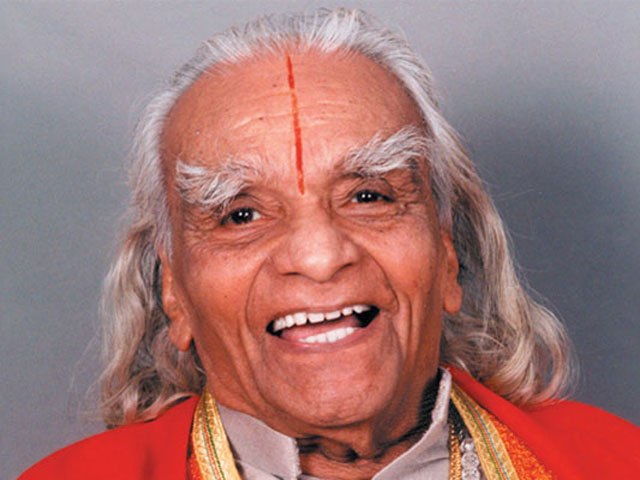a legendary master

B. K. S. Iyengar popularized yoga in the west through his method on alignment, sequencing and timing.
"Research based experience" and "Experience based research" during his daily practice for over 80 years helped him to evolve his techniques over his life span.
His method eventually culminated into the term "Iyengar Yoga" and is a style of yoga that is meant for all and ultimately, is a way of life.
Guruji (as he is affectionately known) left his body on August 20, 2014 at the age of 95 but his yoga lives on.
Standards
Certified Iyengar Teachers are held to an unusually rigorous standard, earning their certification only after years of training and evaluation. Teachers devise sequences of poses which build skill and understanding, as students progress from posture to posture, class to class and year to year.
Alignment
Iyengar yoga is most known for its emphasis on alignment. Alignment not just of bones and joints, limbs and torso, but also alignment of the outer body to the inner body, from the periphery to the core and then back from the core out to the periphery. When we are aligned then we are able to access deeper layers of our own consciousness and ultimately connect ourselves to universal consciousness, and all aspects of our life get touched.
Individualized corrections and adjustments for each student, as well as the use of props, are common in an Iyengar Yoga class. Props are there not to make the pose easier, but rather the props help to probe, prompt and awaken our intelligence towards alignment. They also allow for a longer stay (TIMING) in many postures which in turn leads to a deeper penetration of mind into body, and bring about a change at the organic, mental and physiological levels.
Sequencing
Iyengar yoga deals specifically with the nervous system and classes are sequenced in a way that are either heating or cooling to the nervous system, achieving a particular mental, physical or psychological effect.
For instance, you may do all of the same poses according to their name, but how they are sequenced, whether they are supported or unsupported, active or passive, and the length of time (TIMING) spent in the pose will all affect the nervous system differently.
Discipline
Iyengar Yoga aims at developing clear and continuous attention, bringing consciousness to each and every part of the body in order to explore the effect of the mind on the body, and the body on the mind. The postures and our body are ultimately vehicles for self-exploration, used to perceive the mind, to develop a quality of reflectiveness, and to achieve greater self-awareness, so that yoga practice becomes a mirror for the self. Through yoga practice our understanding moves from the visible and knowable, to the more subtle. It is a continuous and lifelong process.